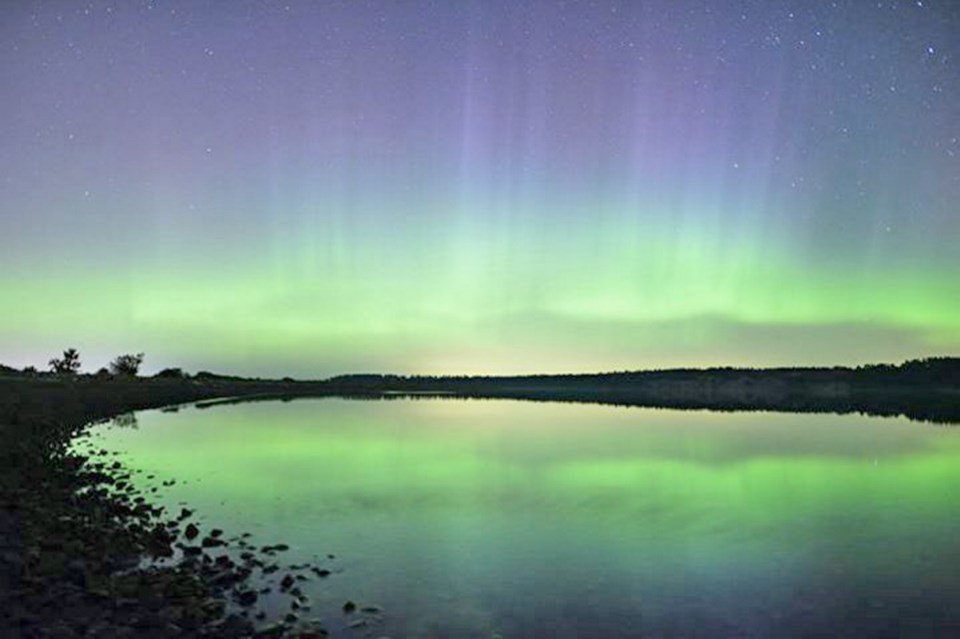It doesn’t happen often in the capital region, but nighttime observers the past few nights have been treated to the spectacle of the aurora borealis — the northern lights.
And Karun Thanjavur, senior lab instructor for the University of Victoria’s Department of Physics and Astronomy, was holding out hope for another show overnight Tuesday.
“This is quite far down south,” he said. “All put together it was fairly uncommon to see aurora at this time of the year from Victoria.”
A storm on the sun contributed to the appearance, Thanjavur said.
“The sun is a very active star,” he said. “It looks like the storm is abating right now which means the activity will die off.”
The phenomena of northern and southern lights happens when gases and material break away from the sun, Thanjavur said.
“Because these are charged particles, the [Earth’s] magnetic field diverts those particles toward the north and the south pole.”
The result is the aurora borealis in the north and the aurora australis in the south.
To see the aurora borealis in the region, it is best to be in a dark area and cast your eyes low to the north, Thanjavur said.
“That’s because this is happening mainly up north, and we are at 48 degrees so we are way off from the north.”
Chances are it would be best seen in a picture taken with a long exposure, he said.
Sky watchers have more to look forward to this week — the annual July-August appearance of the Perseid meteor shower is expected to reach its peak.
“It’s the debris from a comet orbiting the sun,” Thanjavur said. “The Earth passes through the debris.”
The comet is Swift-Tuttle and the meteor shower is named for the constellation Perseus.
According to earthsky.org, some of the best viewing will be in the morning on Friday, Saturday and Sunday.
“If you’re in the city you’ll only be seeing the brighter ones,” Thanjavur said.



